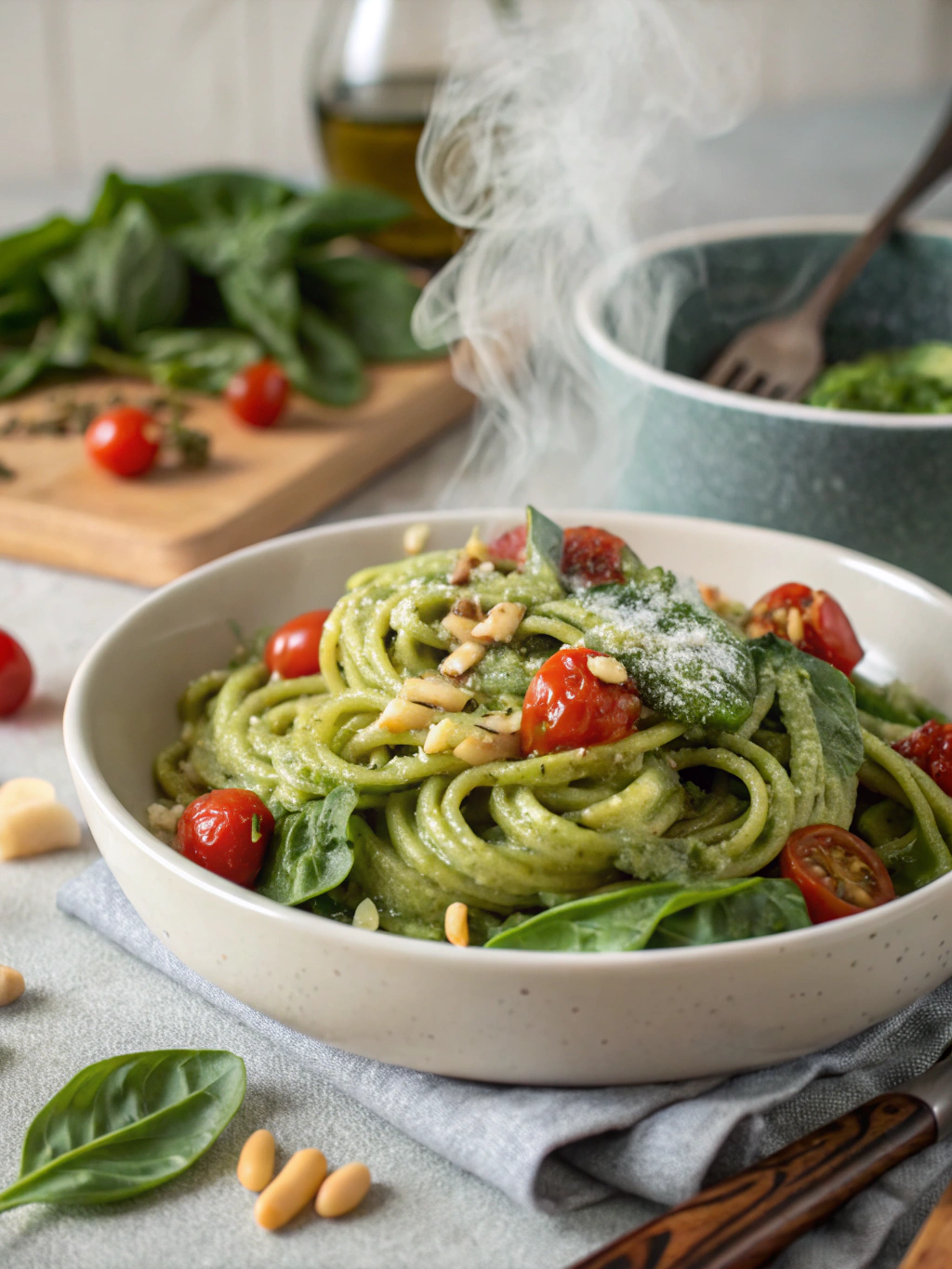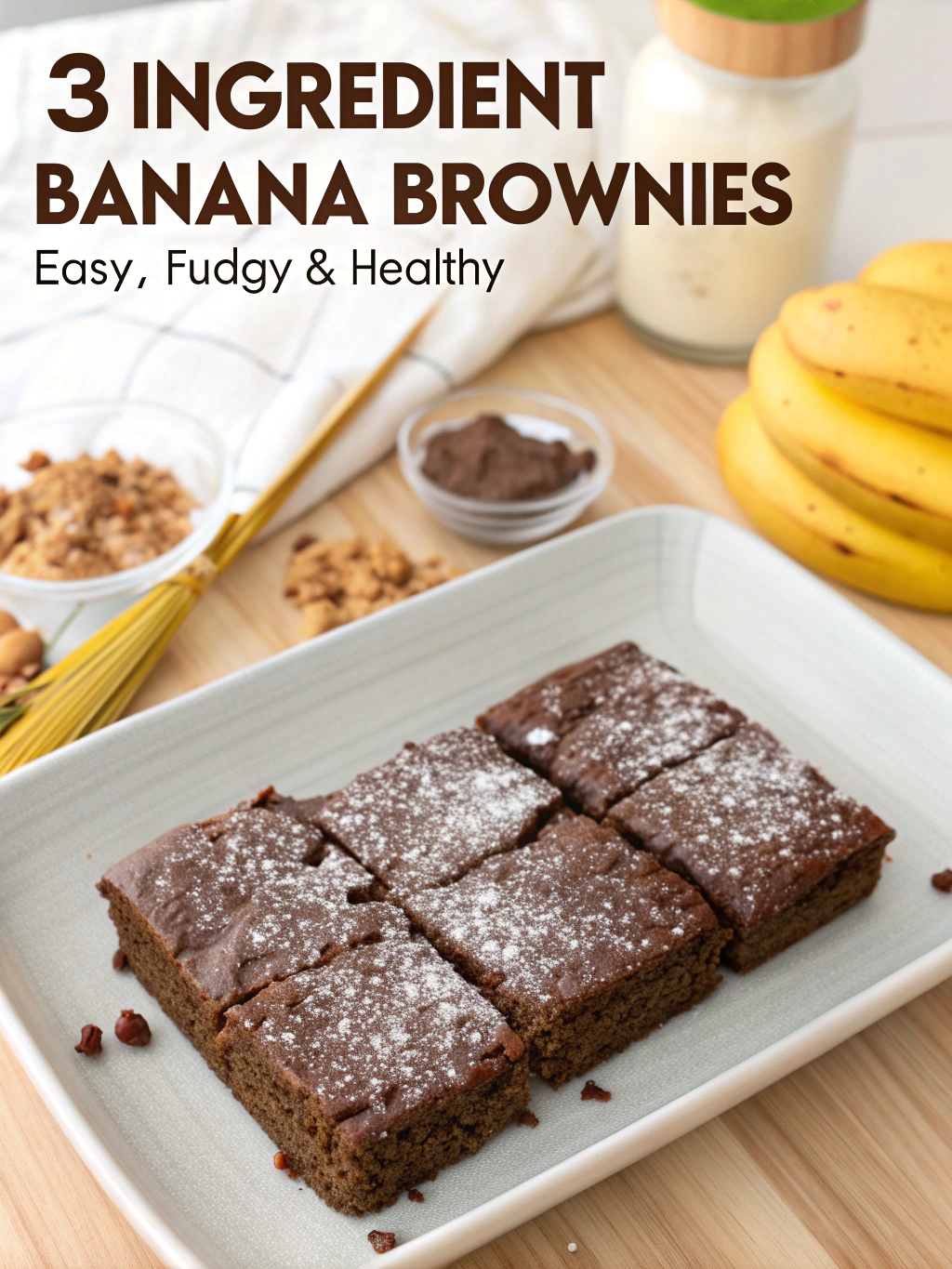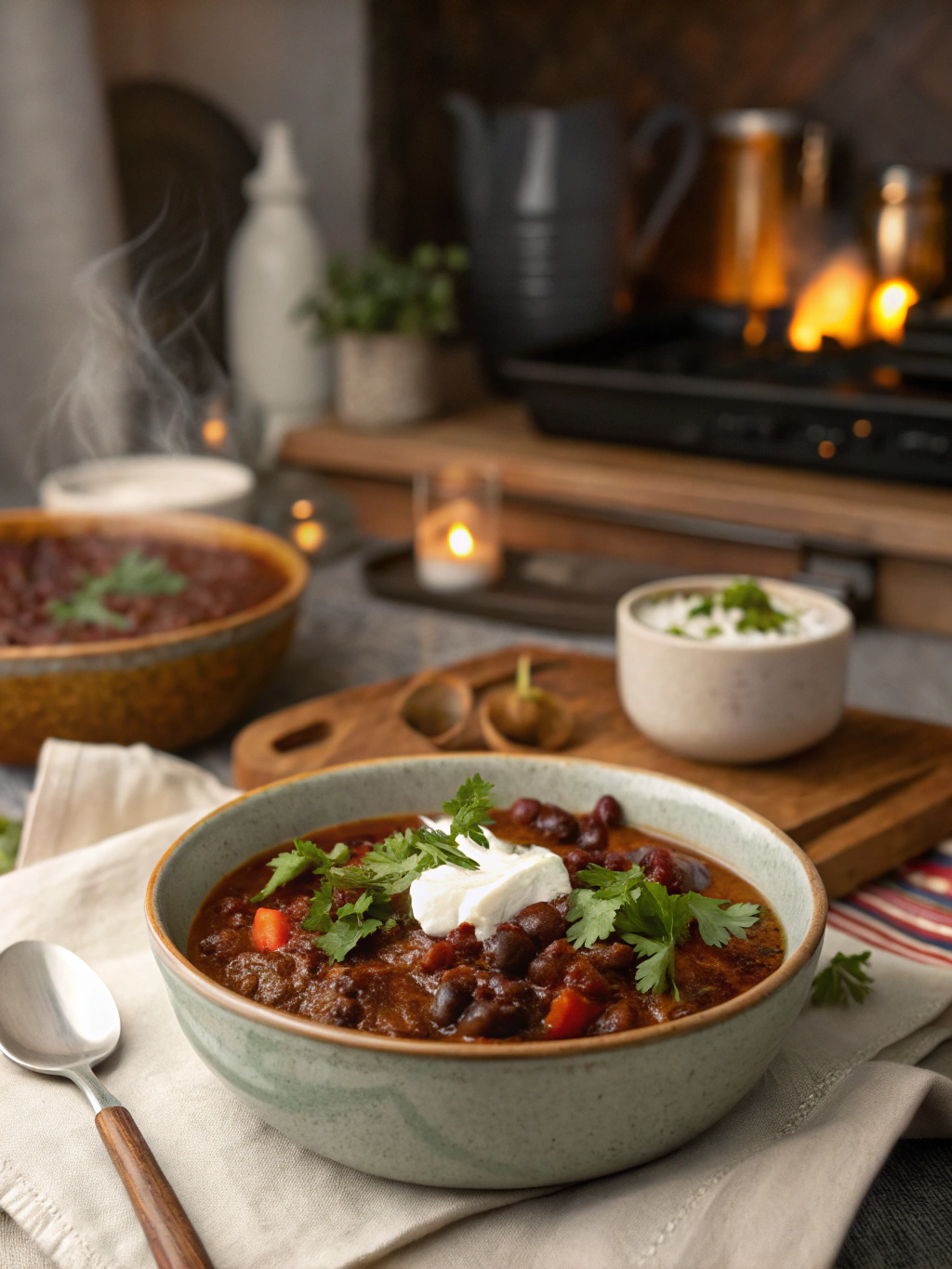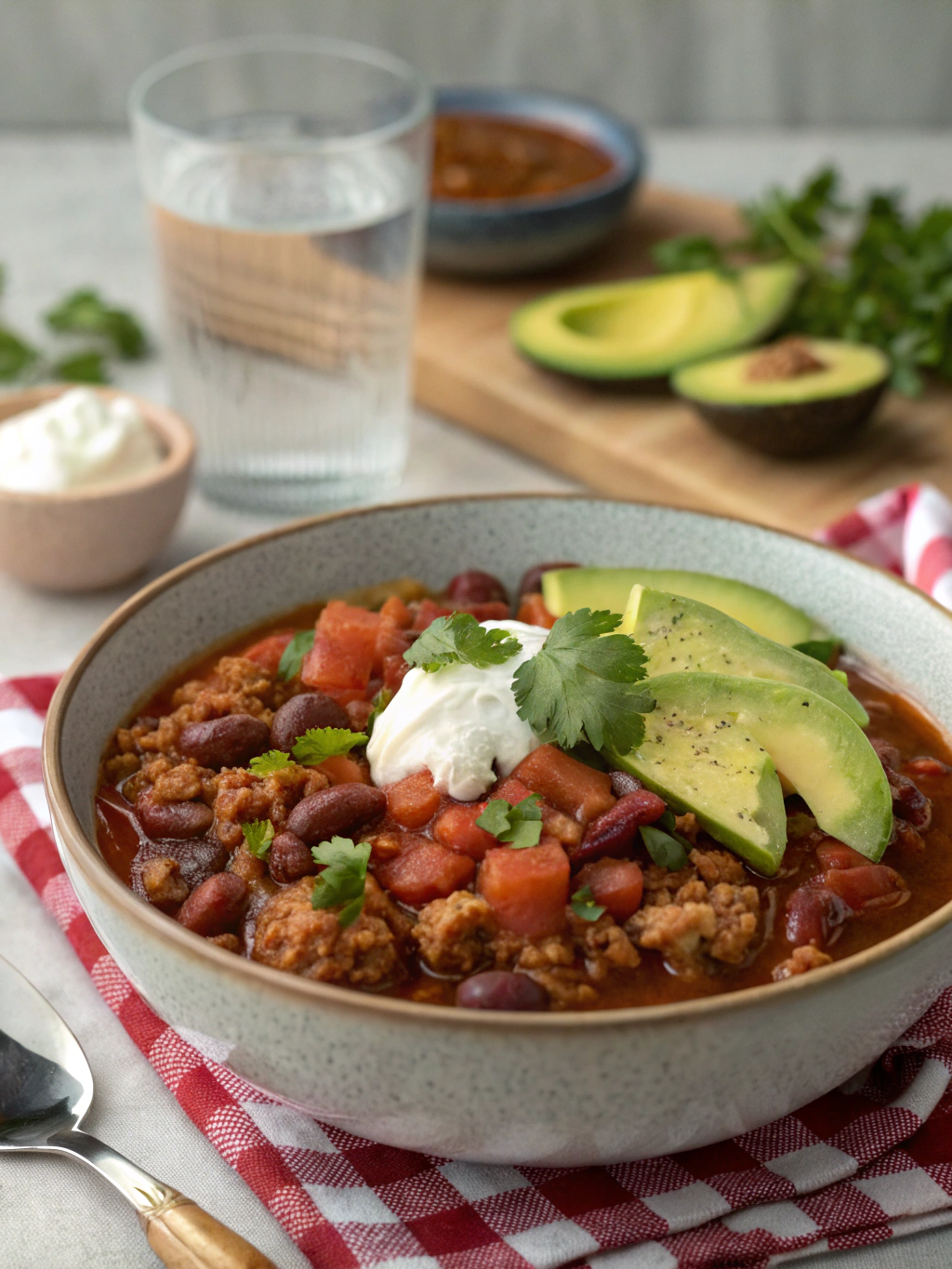
Have you ever stood in your kitchen at 6:43pm, holding a bunch of herbs and wondering why nobody ever talks about the emotional relationship between pasta and herbs? I sure have. Last Thursday, I was knee-deep in basil and tarragon, my fingers stained green and my patience wearing thinner than dollar-store plastic wrap. That’s when this Creamy Green Goddess Pasta recipe sorta slapped me across the face—not literally, cuz herbs don’t have hands, but you know what I mean. This easy 30-minute dish has saved my dinner plans more times than I care to admit, especially after that whole debacle with the pressure cooker and my neighbor’s cat (don’t ask). When creating this, I invented what I call “herbal cascading”—it’s when you introduce herbs at different cooking stages for maximum flavor bombardment. Most chefs would tell you to add herbs all at once, but whatevs. Try this creamy green goddess pasta tonight, or don’t—I’m not your kitchen supervisor.
My Weird Journey to Green Goddess Greatness
So I was actually making fish sticks (frozen, don’t judge) last winter when my blender kinda exploded. Not like, dangerously, but enough that parsley and yogurt decorated my ceiling in a pattern my landlord still asks about. That mess somehow inspired this Creamy Green Goddess Pasta recipe—funny how kitchen disasters birth the best ideas! My aunt Gertrude (who never measures anything and somehow makes perfect food) showed me back in 2017 how herbs could transform even the blandest dish, though she was talking about meatloaf, not pasta. I first made this recipe in my tiny apartment in South Minneapolis, where my stove had exactly 1.5 working burners and the humidity made everything wilt faster than spinach in a sauna (this is what I call “Minnesota mushiness”).
My early versions of this creamy green goddess pasta were honestly disgusting—too much anchovy, not enough acid. Then I discovered the power of sequential herbage (another term I made up after three glasses of rosé). It took me about 14 tries over two weeks—no, wait, it was more like six attempts over three months—to get it right. (The dates are fuzzy cuz I was also training for a half-marathon I never actually ran.) I dunno why more people don’t put potato chips on pasta, but that ended up being my secret weapon in this recipe!
Ingredients You’ll Need (or reasonable facsimiles thereof)
- 12 oz linguine (or any pasta shape with curves—I’m partial to cavatappi because the sauce gets trapped in its little curlicues)
- 2/3 cup full-fat Greek yogurt (THE CHEAP STUFF WILL SEPARATE, don’t come crying to me if you ignore this)
- a small bunch of basil (approximately a Higgins handful—which is what I call the amount my cat Higgins can knock off my counter in one swipe)
- 3-5 stalks of tarragon (the licoricey herb most people hate until they try MY recipes)
- half a lemon’s juice, plus some zest if you’re feeling fancy
- 2 tablespoons olive oil (the good stuff, not that weird blend that tastes like wet cardboard)
- 1⁄4 cup toasted walnuts or pine nuts (or crushed potato chips for what I call “trashy crunch enhancement”)
- 4 cloves garlic (or 6 if nobody’s kissing you tonight)
- 1/2 avocado that’s juuuust on the edge of being too ripe (trust me on this timing for my creamy green goddess pasta)
- A splash of milk or pasta water for sauce thinning (use your eyeballs to measure)
- salt and pepper (duh)
- optional: 1-2 anchovy fillets for umami blasting
Let’s Make This Creamy Masterpiece Happen
Step 1: Fill a pot with water. Not all the way to the top—who does that?—but about 2/3 full. Salt it until it tastes like that time you accidentally swallowed ocean water at the beach. Bring that business to a boil while you do the herb prepping.
Unrelated but important: One time I forgot the salt and served the blandest pasta of my life to my ex, who still brings it up at family gatherings even though we broke up 4 years ago.
2 – Mince the garlic using the Mabel-smoosh technique—that’s where you crush it with the side of your knife first, then chop it while occasionally pausing to scrape bits off the blade before they fly across your kitchen. Been there, found garlic under the fridge 3 months later.
Step C: While the pasta’s cooking (set a timer for 2 minutes LESS than the package says—I’m serious about this), grab your blender. Combine the yogurt, most of the herbs (save some for garnish or whatever), garlic, lemon juice, avocado, and that anchovy if you’re using it. WAIT—I actually recommend adding just half the herbs now and the rest later for what I call “brightness preservation.”
Fourth: Blend until smooth-ish. I like mine with teensy green flecks rather than completely smooth because I’m not running a Michelin restaurant here. If it’s too thick, add a splash of milk or some pasta water—honestly, pasta water is liquid magic and I sometimes save it in jars which my roommate finds disturbing.
Step cinque: Drain pasta when it’s still slightly undercooked. KEEP SOME OF THAT STARCHY WATER, maybe like 1/2 cup? Return pasta to pot, add the green goddess sauce, and cook over medium-low heat for about 2 minutes or until you get impatient. The sauce will thicken as it heats—sometimes too much, which is why you saved that pasta water, you smartie! If it starts looking gloppy (technical term), add splashes of pasta water until it reaches what I call “silk road consistency” – not too thick, not too runny.
Check out my Lemon Garlic Shrimp Pasta for another quick dinner option
6 – Toss in those toasted nuts or crushed chips now. This is non-negotiable—your creamy green goddess pasta NEEDS textural contrast or it’s just fancy baby food.
Notes & Tips That May Contradict Everything You Know
• Store leftovers by NOT putting plastic wrap directly on the pasta. Everyone says to do this, but it makes the herbs turn black. Instead, I put a slice of bread on top of the pasta in the container—it absorbs moisture without touching the herbs. My grandma Lulu taught me this and she was wrong about politics but right about pasta storage.
• NEVER reheat this in the microwave despite what modern convenience culture tells you. Instead, put cold pasta in a cold pan, add 2 tbsp water, then turn heat to medium-low and cover. The slow heat keeps the herbs from turning to sad brown mush.
• Try the three-fork mixing method: Use two forks to toss pasta with sauce, then a third fork to eat test bites along the way. Everyone thinks this is excessive but it creates the perfect sauce distribution.
• The sauce can be made up to 8 hours ahead BUT—and this is vital—it must be stored with a layer of olive oil on top and a prayer to the herb gods. Otherwise, oxidation makes everything taste like lawn clippings.
For vegetarian protein options to add to this pasta, check my Tofu Cooking Guide
• External resource: Check out The Spruce Eats’ complete guide to fresh herbs for proper herb selection, though their storage advice is questionable at best.
Kitchen Heroes That Make This Possible
IMMERSION BLENDER WITH DETACHABLE BEAKER ★★★★★
Mine has survived two moves and being dropped in a sink full of water.
Amazon: https://www.amazon.com/dp/B08K95ZJFH
MICROPLANE GRATER/ZESTER DELUXE ★★★★★
I use the handle as a lime juicer despite the manufacturer specifically saying not to do that.
The original version was discontinued in 2019 but I refuse to give mine up.
Variations Because Boredom Is the Enemy of Good Eating
Winter Variation: Replace the avocado with 3 tablespoons of softened cream cheese and add 1/4 teaspoon of nutmeg. Sounds wrong but tastes amazing, especially if you’re serving this creamy green goddess pasta alongside something boring like plain chicken.
Vegan Version: Use coconut yogurt instead of Greek yogurt, but you MUST add 1 teaspoon of rice vinegar to counteract the sweetness or it’ll taste like a tropical dessert pasta (which I accidentally made once while cooking with a fever).
The Hangover Helper: Add a runny-yolk fried egg on top and an unnecessary amount of hot sauce. The combination of creamy green goddess pasta with spice and egg yolk is scientifically proven to help headaches (according to my research of one—me).
Try my Spicy Arrabbiata Sauce if you love this but want something with heat
The Question Everyone Asks Me
Why does my green sauce turn brown by the next day?
Because you’re storing it wrong, friend! Most people assume refrigeration is enough, but herbs are basically still alive and breathing. They continue to oxidize unless you create what I call a “flavor tomb.” Mix 2 teaspoons of lemon juice with 1 tablespoon of olive oil, then drizzle over the top of your leftover creamy green goddess pasta before refrigerating. This creates a protective barrier against oxygen that most culinary schools don’t teach because they’re too busy making brunoise carrots or whatever.
Final Herby Thoughts
I truly believe this Creamy Green Goddess Pasta represents the chaos and beauty of home cooking—sometimes the best recipes come from disasters and weird experiments. My kitchen motto is “If it tastes good, who cares if you did it right?” which drives my formally-trained chef friend Marcus absolutely bonkers. Will I ever stop putting potato chips on pasta? Probably not. Will I continue to develop variations of this recipe even though my notebook is already full of green sauce ideas? Absolutely. Maybe next time I’ll try adding fermented black garlic or that weird spice blend I bought at that gas station in Arizona?
I hope this creamy green goddess pasta brings you the same joy it brings me, even if you don’t follow my instructions exactly. After all, I’m just a self-taught kitchen enthusiast who once won the “Most Creative Use of Leftovers” award at my office potluck (not an official competition, but my colleagues made a certificate and everything).
Saucily yours,
Chef FrannyP (not my real name, but what my cat calls me in my imagination)
Share with your friends!
Categorized in: Healthy Recipes
Related Recipes










